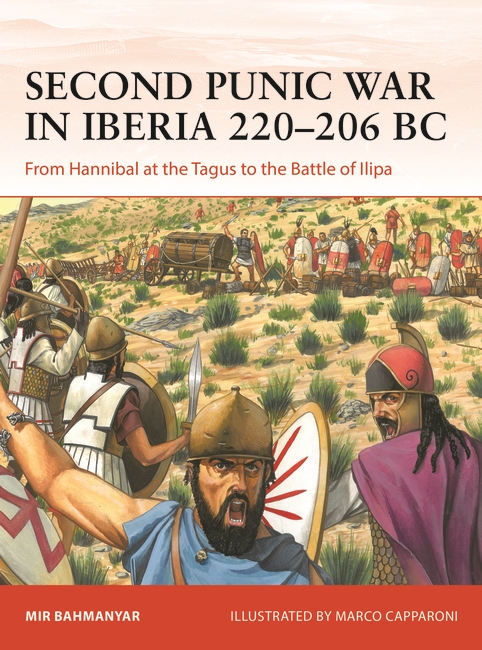
Osprey Publishing is well known for its original artwork, and it has long been a dream of mine to join the ranks of so many of its amazing artists. I have always been interested in history. From childhood I have spent time drawing and painting, and have been influenced by many illustrated books. After finishing art college in Rome, my goal was to enter illustrated publishing, and specifically for Osprey titles.
In this blog post, I would like to explain how I approached one of the three plates done for Mir Bahmanyar’s Second Punic War in Iberia 220–206 BC: From Hannibal at the Tagus to the Battle of Ilipa (CAM 400). This plate was chosen as the cover art for the volume, and depicts the Battle of the Upper Baetis of 211 BC between the Roman army of the Scipio brothers and the Carthaginian army of Hasdrubal Barca near Ilorca (modern-day south-eastern Spain).
The first thing I do when receiving a commission is to read the brief from the author and any supplementary context from the editor. I check I have enough information on the topic and may conduct further research using previous publications and documentaries. I then make initial composition sketches (usually a few for each scene) and make sure to ask the author for any comments. I prefer to make those doodles fairly small but easy to understand, with arrows and notes.
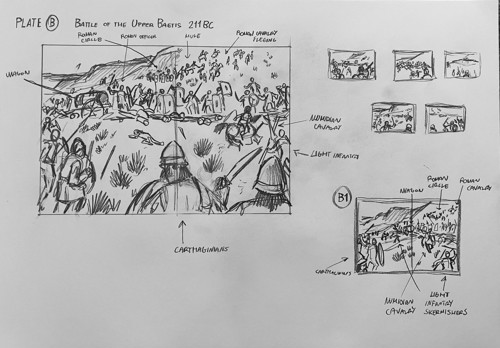
After this stage I begin one of my favourite parts of the process (besides seeing the whole plate done I must say!), which is collecting the pictorial references from the author and the extra work I do to help add to the finer details. Before drawing the final plate, I like to model some of the poses and the armour or weapons in a large sketchbook; several pages are filled up with conceptual doodles, which are done with mediums such as ink, pencils and watercolour. A study for the colour scheme of the future final plate is also done and viewed by the author.
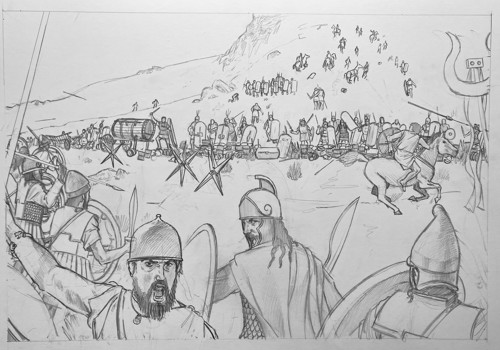
The next stage of the process is the detailed drawing of the plate. Larger than any of the sketches done previously, this one is very important as it will be painted over. I must be sure everything the author and editor wants to see in the final plate is in there, and drawn as they want. I like to use a soft 3B pencil to quickly draw, but when shading and drawing small details I usually change to an HB. Changes may still be applied. For example, I was asked to add the Carthaginian warrior looking straight ahead in this plate.

The last stage comes after the author has approved the detailed drawing: painting it all! My favourite technique is using gouaches, a perfect medium in my opinion as the paint can be used diluted with water for lighter effect, but can also be built upon to add strength and coverage. I always start with the background, working forward to the foreground, as it helps give depth to the artwork. Many other artists work this way too. The clothes and weapons are painted following the references given me by the author, but I also use my own research and sketches done previously.
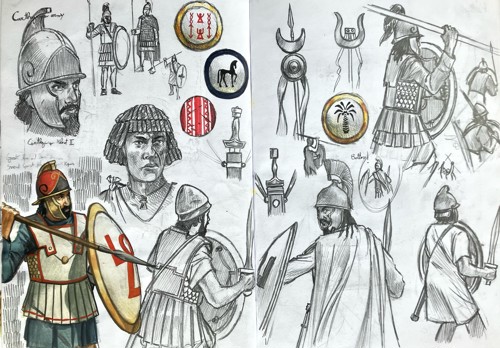

Thank you to Molly from the Osprey team for asking me to write this short but hopefully helpful blog post about the process behind the cover art for CAM 400.
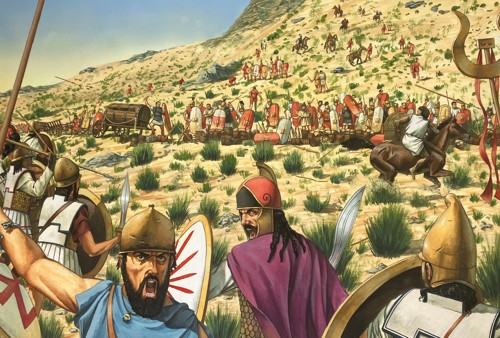
Specializing in history and military history, Marco Capparoni is a fine artist and illustrator for wargames, fiction and non-fiction publishers and private commissions.You can visit Marco's website here.

Comments
You must be logged in to comment on this post. Click here to log in.
Submit your comment